What Chimney Flue Liners Are Easiest to Install?
Installing a new flue liner in your chimney is a job which can be made much easier by selecting the right type of liner. In this guide, the Trade Price Flues team will tell you exactly what chimney flue liners are the easiest to install…
What types of flue liners are there?
In order to select the flue liner that’s going to be the easiest to install in your new chimney, you first need to know the different types of flue liner that are available.
The most common types of lining found in UK chimneys are:
> Lime mortar.
> Concrete cast-in-place.
> Concrete.
> Pumice.
> Clay.
> Flexible metal liners.
Below, we’ll take you through each of these lining types and what’s involved in their installation.
Lime mortar flue lining
Suitable for: class 1 chimneys - but not recommended for use any longer.
Lime mortar is a material which is rarely used these days for the lining of chimneys. It was a material which was largely used before 1965 (when new Building Regulations introduced stricter rules around the lining of chimneys).
Lime mortar was usually ‘parged’. Parged is simply another way of saying rendered. This means the lime mortar was applied by hand using a set of parging tools to the inside of the chimney flue.
The reason that lime mortar has largely fallen out of favour as a chimney lining material is because it is vulnerable to attack from the acids and tars that are produced by a solid fuel fire.
Over time, lime mortar slowly deteriorates, resulting (in the worst cases) in damage to the underlying structure of the chimney stack, e.g. the chimney’s bricks and mortar.
Because of this, we would not recommend relining your chimney with lime mortar.
Concrete cast-in-place flue lining
Suitable for: class 1 chimneys
Concrete flue linings started to be used more widely following the changes in the Building Regulations in 1965.
Concrete flue linings are designed to provide a smooth, friction-free surface inside the chimney flue to aid the escape of gases from the fire. As concrete lined flues are smooth, they also prevent the build up of creosote and other combustibles.
Concrete flue linings also help to insulate the chimney, keeping escaping gases and smoke warm, providing a better draw for the fire.
Despite these benefits, lining a chimney with concrete does involve a fairly complex installation process.
The process begins with the insertion of a rubber ‘former’ into the chimney. This ‘former’ is then inflated and centred within the chimney flue. A delivery hose, connected to a pump, is then inserted into the space left by the former within the flue.
Concrete is then pumped through the delivery hose into the flue, filling the space around the former. The concrete will fill any voids, cracks and other space within the flue.
Once the concrete has hardened, the rubber former is deflated and removed. This leaves the chimney with a smooth concrete lining.
Because of the complexity of this installation process, it requires the use of specialist contractors.
Concrete flue lining
Suitable for: class 1 chimneys
Aside from cast-in-place concrete linings, it’s also possible to find concrete flue liners that are made in cylindrical and square sections. These sections connect together, with the joins sealed using an appropriate lip glue.
The installation of concrete flue liners of the sectional type is best done when the chimney is first being constructed.
If you want to install a sectional concrete flue liner after the chimney has been built, you’ll find that it’s a very expensive, complex and time-consuming process. This is because the chimney basically has to be disassembled in order to provide access to the flue.
As such, concrete sectional flue liners do not make good replacement liners.
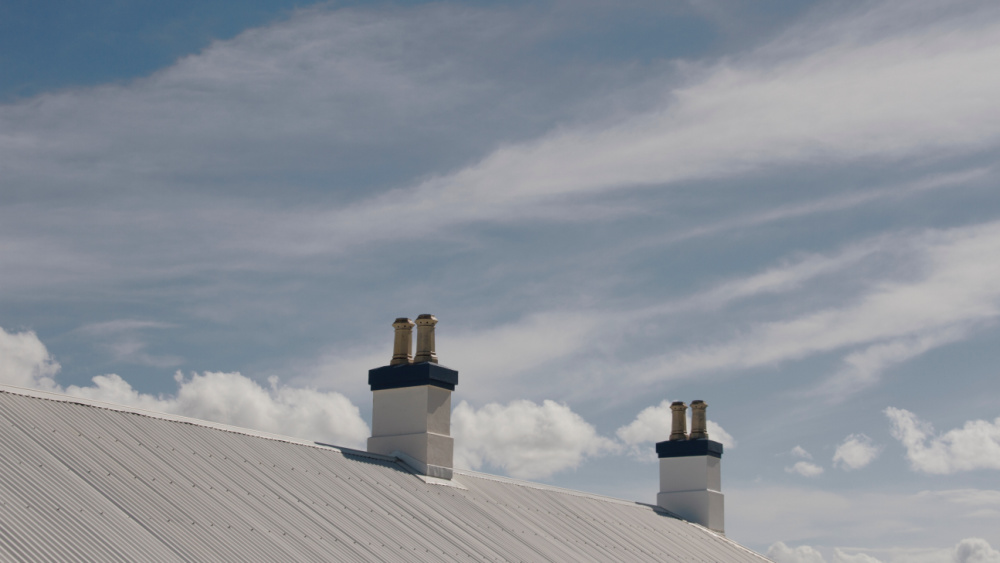
Pumice flue lining
Suitable for: class 1 chimneys
Pumice flue liners are - as their name suggests - manufactured from pumice. Pumice is a volcanic rock which is highly resistant to fire and heat. It’s also particularly hard, being a six on the Mohs scale.
Pumice flue liners tend to take the form of cylindrical sections in a range of diameters.
The installation of a pumice flue liner will normally involve stacking each cylindrical section on top of each other, sealing the joins between each one with lip glue.
Because of this installation process, pumice flue linings are usually installed prior to the construction of a chimney.
If you want to add a pumice flue liner after a chimney has been built, the chimney would need to be at least partially demolished in order to provide access to the flue. Once the pumice flue liner has been installed, the chimney can then be rebuilt.
Because of this, pumice flue liners are typically not used as a replacement liner.
Clay flue lining
Suitable for: class 1 chimneys
Clay flue linings work in very much the same way as pumice and concrete sectional flue linings, being cylindrical sections that join together to form a complete flue.
Like pumice, clay is a heat-resistant material. It also has low permeability and a smooth surface, meaning that it’s ideal for use in flues. Clay will provide a low friction surface for the passage of gases from the fire, and will also resist the accumulation of creosote and other combustible materials.
As with pumice flue linings, the installation of clay flue linings will normally require at least the partial disassembly of the chimney in order to provide access to the flue. This can prove to be a very expensive process, as such clay flue liners are not recommended as a replacement liner.
Note - the concrete, pumice, and clay sectional flue linings detailed above are sometimes labelled under the collective term ‘rigid refractory liners’.
Flexible metal liners
Suitable for: class 1 chimneys
Flexible metal flue liners are arguably the most popular flue liners in use in UK homes today.
Made from stainless steel, flexible metal liners provide many of the benefits of the other liners detailed in this article.
These benefits include; providing a low-friction surface for the passage of gases from fires, a smooth surface that prevents the build up of creosote and other combustibles, insulation to improve the draw of the chimney, and improved efficiency of your fireplace/stove.
Flexible flue liners also have the benefit of being far easier to install than other types of flue lining. In fact, flexible metal flue liners are ideal for both new chimney builds and as replacement liners.
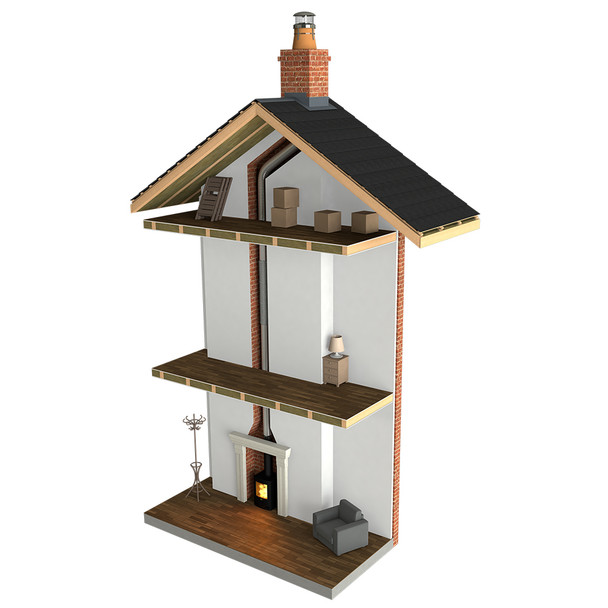
The process begins by selecting a liner of the correct diameter and length (it needs to connect to your stove’s outlet or the chimney gather, and be long enough to reach from the top to the bottom of the chimney).
The next step in the process involves lowering the flexible liner down the chimney. It is then attached to a pot hanger, from which it will ‘hang’ within the chimney flue. Once the pot hanger has been affixed to the top of the chimney pot, the bottom of the liner will then be fixed to the stove or chimney gather.
Depending on the chimney, the whole process can take only four hours to a day to complete.
What is the easiest flue liner to install?
As you’ve probably already gathered, flexible metal flue liners are the easiest liners to install in a chimney.
In particular, flexible flue liners make for the perfect replacement liner. For example, if you live in an older house with an unlined or lime mortar lined chimney, then a flexible flue liner is the perfect replacement liner option.
So, if you’re in need of a replacement flue liner for your chimney, select a flexible metal one.
How to select the correct flexible metal flue liner for your chimney
Despite appearances, not all flexible metal flue liners are the same! There are some important things you need to know when selecting a flue liner for your chimney.
The main thing to think about is what fuel you are burning in your fire/stove.
If you’re going to be burning only seasoned firewood, then you should buy a flexible metal flue liner which is manufactured from 316-grade stainless steel.
If you’re going to be burning a solid fuel such as anthracite - which burns at a much higher temperature than seasoned wood - you’ll need to select a flexible metal flue liner that’s made from 904-grade stainless steel. This is a tougher grade of stainless steel that can cope with the higher temperatures and hotter gases generated by solid fuel fires.
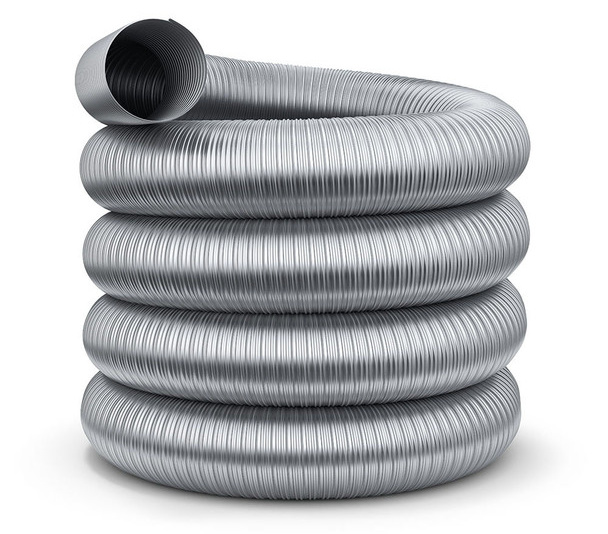
Shop Now - Flexible Metal Chimney Flue Liners
It’s also critical that you select a flexible metal flue liner from a reliable, quality manufacturer. Whilst it may be tempting to buy a cheap, generic flexible liner from an online marketplace, you’ll find that it fails quickly. It really is a false economy.
Here at Trade Price Flues, our flexible metal chimney flue liners are made from the highest quality stainless steel and come with a 15-year no quibble guarantee - so you can be assured that you’ll get a long service life from one of our liners.
Our liners are also unique in that they are the only flue liners on sale in the UK that can be fitted in either direction.
What parts do you need to fit a flexible metal flue liner?
Aside from the flue liner itself, there are a number of other parts you’ll need to complete your installation.
The parts that you need to fit a flexible metal flue liner are:
> Pot hanger.
> Chimney pot.
> Register plate or chimney gather.
> Flue adapters.
> Fire cement.
> Stove pipe.
Pot hanger
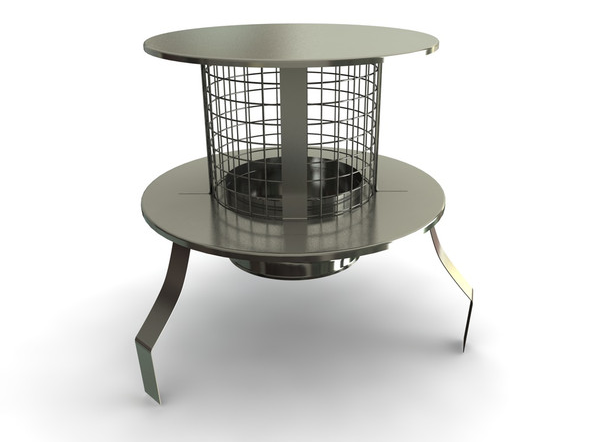
Shop Now - Pot Hangers
It’s the job of the pot hanger to attach to the top of the flue liner and sit atop the chimney pot. As such, the pot hanger anchors the flue liner in place, allowing it to hang down the flue.
There are many types of pot hanger available, including anti-downdraught models, pot hangers with rain caps, and pot hangers with integrated bird guards.
Chimney pot
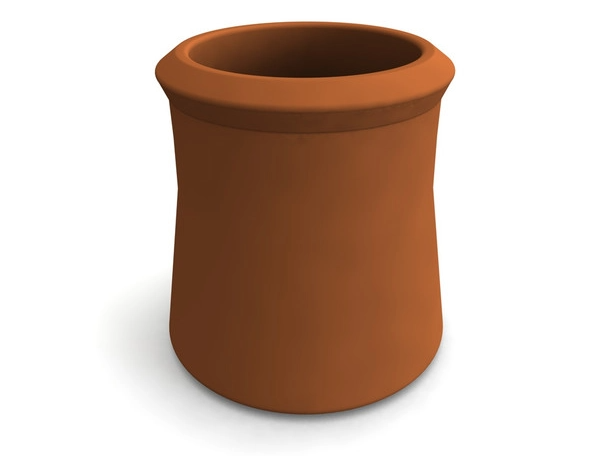
Shop Now - Chimney Pots
If you’re going to the effort of installing a new flue liner in your chimney, it can make sense to replace your chimney pot at the same time.
Over time, chimney pots can be damaged by frost and bad weather. So, if you notice that your existing pot is chipped or otherwise damaged - replace it!
Here at Trade Price Flues, we stock terracotta chimney pots in a range of four sizes and two different colours.
Register plate/chimney gather
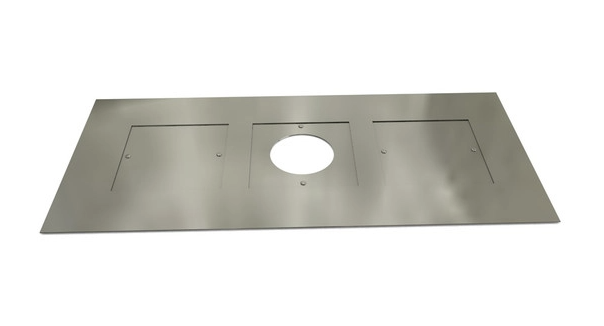
Shop Now - Register Plates
Depending on whether you have an open fireplace or a wood-burning stove in your home, you’ll need either a register plate or a chimney gather.
Register plates are for use with wood-burning stoves, and chimney gathers are for use with open fireplaces.
In the case of a register plate, its purpose is to help funnel the flue liner down to the stove pipe, as well block up the base of the chimney cavity.
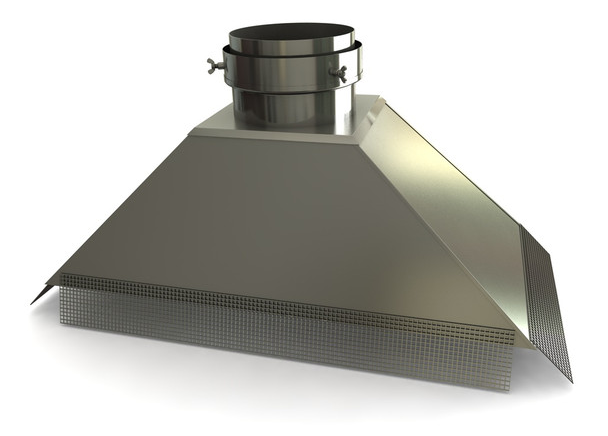
Shop Now - Chimney Gathers
A chimney gather on the other hand will directly attach to the bottom of the flue liner, helping to seal the base of the chimney and ensure that smoke from the fire only goes up into the flue liner.
Flue adapter
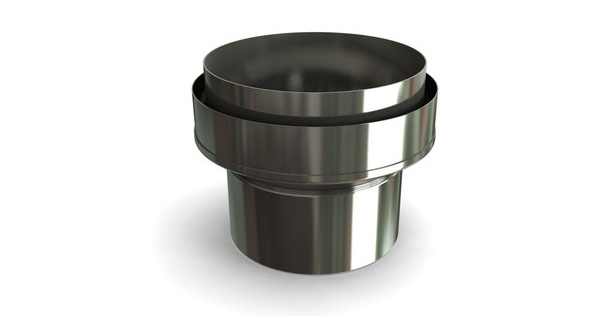
Shop Now - Flue Adapters
If you have a wood-burning stove in your home, then you’ll need to use a flue adapter along with your new flue liner.
The flue adapter is used to connect the bottom of the liner to the stove’s stove pipe.
Flue adapters are available in a range of sizes (to match the diameter of your stove pipe and flue liner). Flue adapters are also available with different connection types. Some have holes which allow you to screw the liner into the adapter. Other types use grub screws to fix the liner to the adapter. Still others are a screw fit and will screw onto the bottom of the liner.
Fire cement
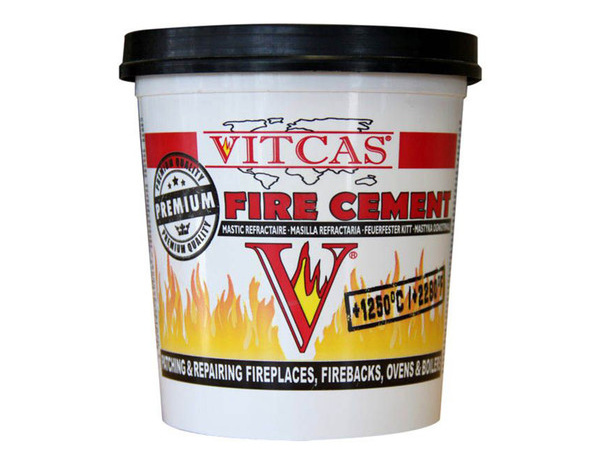
Shop Now - Fire Cement
Fire cement is a handy item to have close at hand when you’re fitting your flue liner. Typically used to seal cracks and gaps, fire cement will particularly come in handy when you’re connecting the stove pipe to your stove.
Without the application of fire cement, you may find that you get small leaks of smoke from where the stove pipe connects to the stove.
Stove pipe
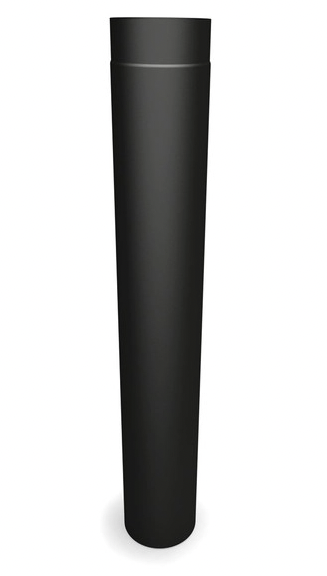
Shop Now - Stove Pipes
If you have a stove in your home rather than an open fireplace, then you’ll need a stove pipe.
The stove pipe connects to the spigot - which is located either at the rear or the top of the stove - and the bottom of the flue liner. A flue adapter is used to connect the stove pipe to the bottom of the flue liner.
Stove pipes are available in a range of diameters (select the diameter that corresponds to the spigot on your stove) and are generally available in either stainless steel or matt black.
Chimney flue liner kits
Instead of buying all of these parts separately, it’s possible to buy complete chimney liner flue kits that contain all the components you require in a single package.
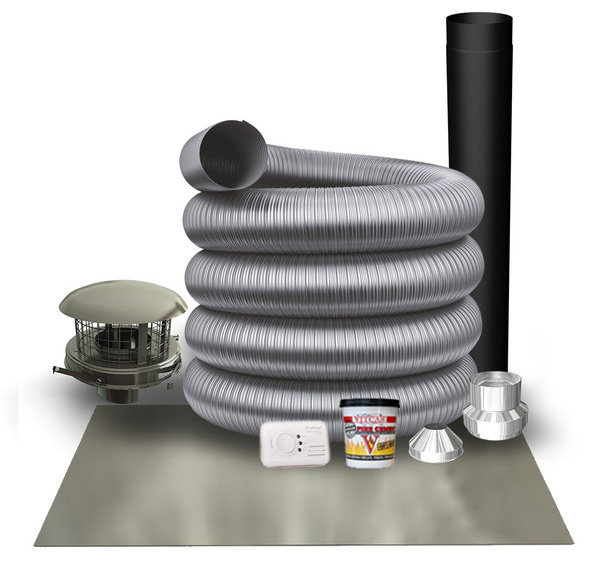
Shop Now - Chimney Flue Liner Kits
Here at Trade Price Flues, we offer a range of chimney liner flue kits covering the most popular diameters, grades, and lengths.
Shop the best flue liners online
If you’re looking for a new flue liner for your chimney, then buy one from Trade Price Flues.
Not only are our flue liners the best on the market, but we hold a large stock and offer free nationwide delivery on orders over £150.
Shop chimney flue liners now
For more chimney and flue advice, read the Trade Prices Flues blog…
When Do You Need to Replace a Flue Liner? | How Much Does It Cost to Fit a Chimney Liner? | Do You Need a Register Plate With a Flue Liner?
Latest Articles
-
Air Pollution Down in the UK Despite Record Wood Burner Sales
Great news! Wood-burning stoves, once considered environmental villains, have transformed into eco-f …18th Apr 2024 -
A Guide to Stove Installation in Lodges, Sheds, and Shepherd’s Huts
Shepherd’s huts, lodges, and sheds have become increasingly popular as charming retreats or alternat …25th Mar 2024 -
Pinned vs. Pinless Moisture Meters: Which is Best for Firewood?
When you collect or buy firewood, it usually starts very moist inside. Using sopping wet wood to bur …4th Mar 2024






